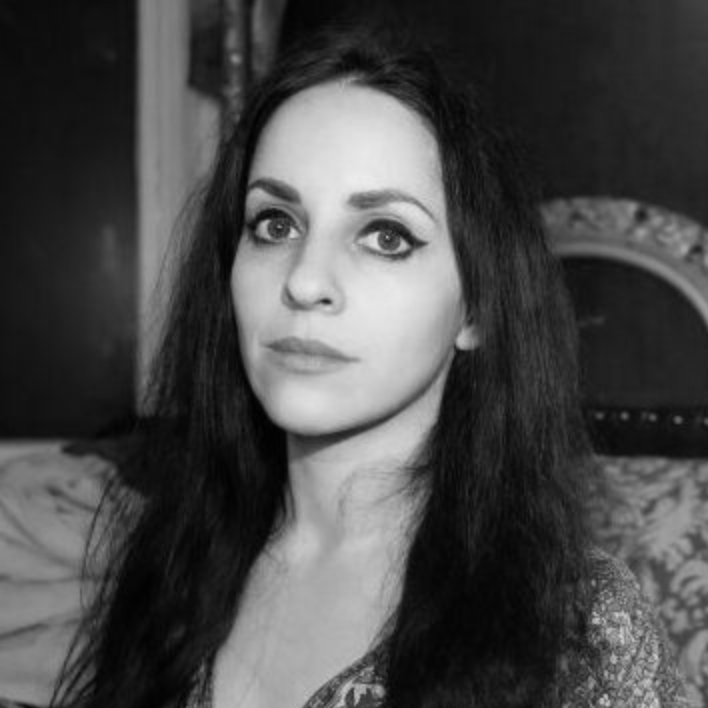Against AI "art"
Like most illustrators, I’ve been horrified by the rise of AI image generators, like Dall-e, Midjourney, and Stable Diffusion. These systems are trained on billions of images obtained without the knowledge, compensation, or consent of their creators, and churn out passable-looking images in seconds, for pennies or for free. Since they are faster and cheaper than any human illustrator can be, these generators threaten to destroy the industry that I have devoted my life to. Worse, they are using our own stolen images against us. My work, like that of many other illustrators, is stored in the LAION-5B database, which billion-dollar corporation Stability AI uses to train their generator. Even more alarmingly, DALL-E, owned by multi-billion dollar Open AI, can create ersatz versions of my work if you type “drawn in the style of Molly Crabapple."
One might argue that the rise of AI image generators is only a problem for illustrators like me. But what about you, editor, art director, or publisher? Why should you forgo something so convenient? Sure, generative AI threatens mass unemployment for millions of people, far beyond the illustration field, but appeals to ethics and solidarity won’t stop you from using it any more than it stopped you from using Amazon or Uber or AirBnB. You need stronger stuff.
Well, here are some reasons why you should avoid using AI art generators, even if the future of illustrators does not concern you in the slightest.
Reason One:
Lawsuits
There are currently two major lawsuits against the corporations that make the major image generators.
In January, three artists launched a class action lawsuit against Stability AI (the company behind Stable Diffusion), Midjourney and DeviantArt, alleging mass copyright infringement.
In April, stock image company Getty launched another lawsuit against Stability AI for 1.8 trillion dollars for scraping their entire archive (the theft was so obvious that generators spat out images with Getty’s mangled watermark).
Many more lawsuits will undoubtedly follow – especially in the EU, where privacy restrictions are stricter than in the US. Why is this relevant to you?
The terms of service at many generators make users liable for copyright violations in the images they generate. In Midjourney’s words: “If you knowingly infringe someone else’s intellectual property and that costs us money, we’re going to come to find You and collect that money from You.”
Reason Two: Blowback
I am yet one of many who are strongly opposed to AI art generators. When I co-released an Open Letter calling for their restriction in publishing, thousands of people, from every continent signed – including MSNBC host Chris Hayes, actor John Cusack, and author Naomi Klein. This opposition extends from organized professional groups to unaffiliated art lovers, but it is passionate and it is growing.
One might argue that the rise of AI image generators is only a problem for illustrators like me. But what about you, editor, art director, or publisher?
Any use of AI-generated work is likely to inspire a loud and persistent backlash. Look at Amnesty International, which tried to use photorealistic images from Midjourney to illustrate an article commemorating the second anniversary of Colombia’s national strike. The criticism was so harsh they were forced to pull the images and issue an apology. Entities from Netflix Japan to Amsterdam’s Rijksmuseum to the Bradford Literary Festival have all faced fury for using AI-generated images. The point of the illustration is to make you look good. Why use something that will do the opposite?
Reason Three: Sameness
It’s been mere months since AI art generators exploded, but that’s already long enough for them to have developed certain stylistic tics. There’s the gelatinous smoothness of the skin. Profusion of fingers and teeth. Limbs that go nowhere. Above all, there’s the sameness. An image generator cannot create – it can only spit out pastiches of the art it stole; and if these generators become ubiquitous, the quantity of human art will be dwarfed by oceans of AI-excreted schlock, which the generators will train on and spit out versions of, in an algorithmically-enabled ouroboros of visual mediocrity.
If you use images from a generator, you are using images that look like the images posted by every other yahoo who uses a generator… including your competitors. You give up the very advantage that art is supposed to give you… the ability to be visually unique.
So there you have it – three unemotional, business-wise reasons why you, my hard-nosed reader, should stay away from AI image generators.
Having defined what I’m against, I now want to talk about what I’m for. Even more than an artist trying to save her field, I am what the digital theorist Douglas Rushkoff calls Team Human – in that I believe that technological developments must be aligned with human values, rather than treated as some sort of manifest destiny, to be imposed upon us regardless of the costs.
While generative AI might be coming for us illustrators, it is coming for you as well. Anyone who translates, writes, sings, codes, conceptualized, or creates is in danger of being chucked out of work by robots trained on their own bodies of work. This also goes for the people, like you, whose job it is to commission us.
We have one shot to resist Silicon Valley’s plagiarism bots. Let's take it.
Do you agree with this?
Do you disagree or have a completely different perspective?
We’d love to know
